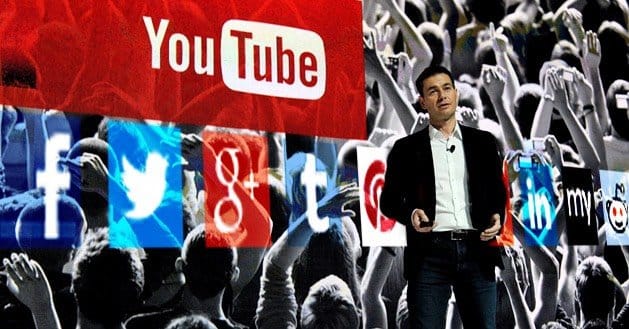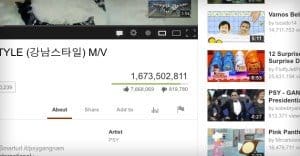 Written by ContentPowered.com
Written by ContentPowered.comGone are the days of posting a YouTube video and watching it organically rise from a fresh new piece of content to a superstar on the most popular list. The video sharing site has long since grown beyond the ability of any random video rising to stardom. These days, if you want your video to be seen, you need to take the time to share it. Keep these do’s and don’ts in mind to share properly.
DO: Tag your videos properly.
Use tags sparingly, just as you would keywords in a blog post. Avoid spamming a dozen or a hundred keywords, particularly if you’re loading them below the fold in the video description. This is a fast way to lose viewers and receive SEO penalties for keyword spam. Also, it just doesn’t work for your purposes.
DON’T: Spam annotations.
Annotations are a powerful way to include corrections, additional information and outbound links to your video content. They can also be very obstructive and distracting when a user watches your video. Use them sparingly, primarily for actual video corrections or additional information.
DO: Use a watermark link.
Include a small watermark in your video and use an annotation link to make it go to your website. This allows you to bring your viewers to your website for further engagement. A watermark also helps prevent video theft, though that’s unlikely to be an issue.
If your video is a PowerPoint presentation with a boring monotone speaker over top, no one is going to watch it. If your actors clearly don’t care about their product and their enthusiasm is clearly fake, no one will care. Quality videos are not hard to produce these days, as long as you have genuine enthusiasm.
YouTube is a social media website, though the social aspects are downplayed. It works best when shared and linked to other social media sites. Share your video on Facebook, Google+, LinkedIn and Twitter if you have them. If you don’t have them, well, you probably should. Encourage users to share your social media posts and to give a thumbs up or subscription to your YouTube channel.
DON’T Set an embedded video to autoplay.
Your website isn’t hosted on Geocities and this isn’t 1995; there’s no reason to have autoplay anything on your site. If users visit and are immediately presented with something making noise at them, they’ll scramble to mute it or back away, which harms your bottom line.
Do a little research and discover what times your users are most likely to use YouTube. More importantly, discover when the majority of users are logging on and viewing new content. If you post in the middle of the night, the early morning hours or when most people are at work, you’re doing your video a disservice.
DON’T: Upload multiple videos at once.
Most users will skip right to the most recently uploaded video to watch. If that video is suitably compelling, they might skip back and watch older content, or they might not. If that video isn’t up to par, they’ll probably skip away rather than investigate further. Upload your videos one at a time to best present it to your audience.
DO: Promote your YouTube channel even when you haven’t uploaded a video.
If the only time you share your channel is when you have new content, you’re missing opportunities. You can promote it on a more low-key level, or promote older content, during the times between video releases.
This includes untargeted ads and other widespread tactics. Most people who aren’t at least slightly interested in your brand are going to ignore that advertising. At best, it gives you virtually no return on your investment. At worst, your widespread advertising will be viewed as spam. Target your ads for best effect.
Other users have more viewers than you. This is a fact, unless you’re VEVO. If you are VEVO, you don’t need this advice, what are you doing here? The point is, video responses allow you to piggyback off the popularity of another video, so long as your video is related in some relevant way. Use them sparingly, obviously, and don’t go out of your way to find a video to reply to every time you post new content. Instead, treat industry related videos as opportunities to create new content.
DON’T: Get into slapfights with bad commenters.
YouTube comments have a bad name all around. They’ve slowly gotten better in quality since the integration of Google+ and the removal of total anonymity, but they can still descend into social madness with relative ease. As a content creator and business owner, you need to stay away from the bad press associated with feeding trolls on YouTube. Unlike the comments section in most other social media sites, negative YouTube comments are rarely an opportunity to exercise customer service. Engage with positive comments and ignore the obvious insults and ploys for attention.
DO: Focus on growing your subscribers and regular viewers.
These numbers represent the number of people you’re broadcasting to, in much the same way that your follower count on Facebook or Twitter is important. Use your off-site advertising to bring in new subscribers. Add a call to action with an annotation link to your subscription feed at the end of your video. Make use of all the standard tactics to bring in subscribers, so you have a wider base of users viewing and sharing your videos when they come out.
DON’T: Buy thumbs up and fake views.
Ever notice how your YouTube view counts stop temporarily at 301? That’s an automated audit from YouTube. They are scanning for illegitimate views, often from known purchased accounts or viewer robots. When they find these, they remove them. So, first you pay for views. Second, they boost your view count up to the audit level. Third, they’re removed, setting your view count lower and eliminating your investment. It’s a bad idea all around.






